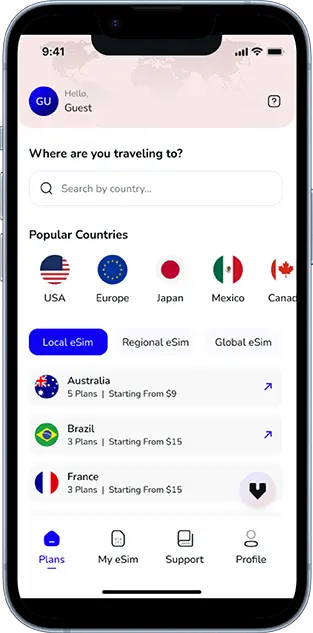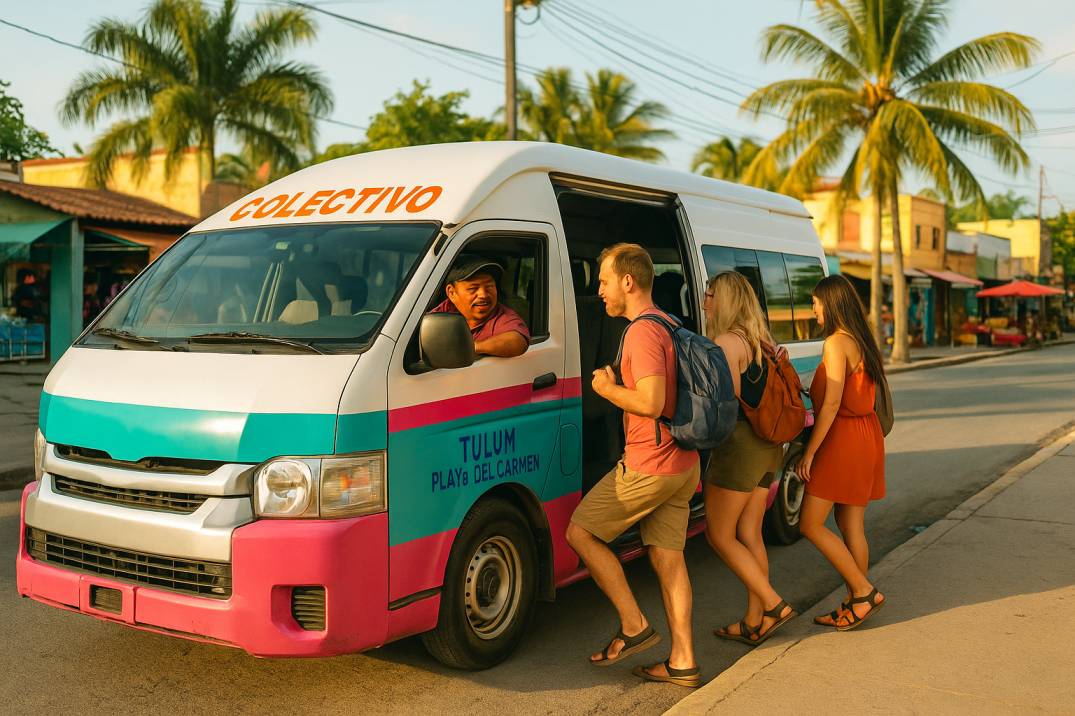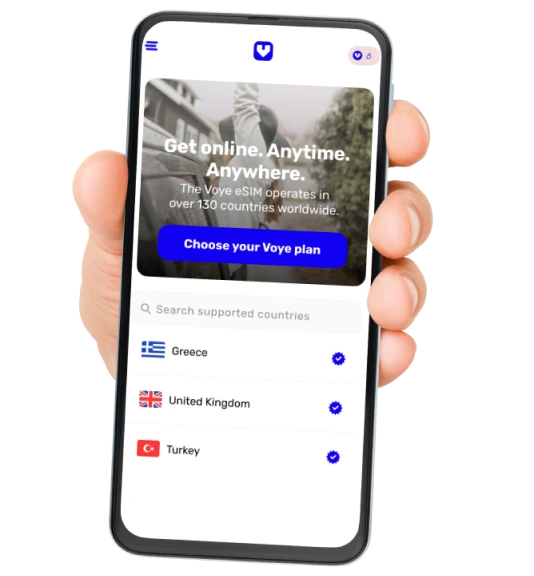Note that iPhone devices from Mainland China aren’t eSIM compatible. Also iPhone devices from Hong Kong and Macao aren’t compatible (except for iPhone 13 Mini, iPhone 12 Mini, iPhone SE 2020 and iPhone XS)
Mexico is a land of vibrant traditions, ancient ruins, majestic volcanoes, and warm beaches — and to truly experience it all, travelers often need to move beyond the all-inclusive resorts and dive into the country’s intricate and surprisingly efficient public transport system. Whether you’re heading to a small pueblo mágico, planning a volcano trek, or visiting UNESCO sites like Chichen Itza, this guide will help you navigate Mexico with ease.
Let’s explore the best public transport hacks for tourists in Mexico — including how to use colectivos, long-distance buses, metro systems, and regional taxis — along with travel tips, what to pack, and the best time to visit.
Travel Smart in Mexico
Activate your eSIM Mexico before landing for instant connectivity.
Understanding Public Transport in Mexico
Public transportation in Mexico is more than just a means of getting around — it’s a window into local culture. From brightly painted buses to shared minivans and bustling metro stations, you’ll find options to suit every budget and route.
Colectivos – The Local Way to Travel
Colectivos are shared vans or minibuses, widely used across Mexico for short to mid-range trips. They’re fast, cheap, and go where major transport doesn’t — think off-the-grid beaches, local cenotes, or remote villages.
Hacks for Using Colectivos:
- Cash only: Fares usually range from 10 to 50 MXN depending on distance.
- No fixed stops: Just wave one down or ask to be dropped off anywhere along the route.
- Luggage space is tight: Great for day trips, not with full backpacks.
- Yucatán Tip: Take colectivos from Tulum or Playa del Carmen to reach snorkeling spots. (Best Snorkeling in Mexico)
Long-Distance Buses – The Comfortable Choice
If you’re planning intercity travel — say from Mexico City to Oaxaca, or Cancún to Mérida — buses are the most convenient and comfortable way to go.
Recommended Companies:
- ADO (Autobuses de Oriente): Clean, air-conditioned, and offers routes to most major cities and tourist hubs.
- OCC and Estrella de Oro: Operate primarily in southern and central Mexico.
Pro Tips:
- Book early during peak months (November, December, Holy Week).
- Bring a jacket: A/C is often blasting.
- Use ADO App or buy tickets at terminals with ID and cash or card.
Traveling to hike a volcano or explore inland towns? Use buses to connect to staging cities before switching to local transport. (Top Mexico Volcano Hikes)
Metro Systems – Urban, Efficient, and Cheap
Mexico City Metro
The CDMX Metro is one of the largest and cheapest in the world. For just 5 MXN per ride, you can explore a megacity that blends Aztec ruins with cosmopolitan culture.
Important Tips:
- Buy a rechargeable Metro card at station counters.
- Use women-only carriages (usually the front of the train) if traveling solo as a female during peak hours.
- Avoid rush hour (7–9am and 5–7pm), especially with luggage.
Monterrey Metro
Smaller, clean, and reliable — ideal for exploring the industrial north of Mexico.
Taxis, App-Based Rides, and Airport Transfers
- Avoid hailing taxis on the street, especially in Mexico City. Instead, use authorized taxi stands (sitios) or apps like Uber, DiDi, and Cabify.
- Pre-pay at airport kiosks to avoid scams.
- Confirm the fare before you begin the ride if not using an app.
Colectivos Made Easy
Use GPS and maps with a reliable eSIM while exploring like a local.
Getting to Offbeat Destinations
Some of Mexico’s most breathtaking experiences lie beyond major cities — and getting there requires a mix of public transport and creativity.
For Pueblos Mágicos and Road Trips
Pair long-distance buses with local colectivos or rental cars to explore towns like Taxco, Valle de Bravo, or San Cristóbal de las Casas. (Road Trip Through Mexico’s Pueblos Mágicos)
For Volcano Adventures
Use buses to reach Puebla, Toluca, or Colima — then join local tours or colectivos to the nearest base camp. (Top 5 Mexico Volcano Hikes)
For Cultural Sites
Reach Chichen Itza from Cancún or Mérida via ADO buses or day tours. (Chichen Itza Guided Tour)
Best Time to Travel to Mexico
Best Months:
- November to May: Dry season, ideal for sightseeing, hiking, and beach visits.
- May: A balance of sun, smaller crowds, and local festivals. (Why May is a Great Time for Mexico)
For Festivals:
- Late October to Early November is perfect for experiencing Día de los Muertos. (Day of the Dead Guide)
What to Pack for Public Transport in Mexico
- Light backpack or day bag for colectivos
- Cash (small bills) for local fares
- Reusable water bottle
- Sweater or shawl for buses
- Power bank (especially for long journeys)
- Comfortable walking shoes
- Sun protection: hat, sunscreen, sunglasses
- eSIM Mexico for maps, translations, and ride-hailing apps
(Stay Connected in Mexico)
Stay Connected: Why eSIM Is a Must for Mexico
Navigating colectivos, buses, and metros is infinitely easier with mobile data. With an eSIM Mexico, you can:
- Track routes and timetables
- Book transport on the go
- Stay safe with real-time navigation
- Use ride-hailing apps seamlessly
Skip roaming fees and SIM card stores — get a Voye Global eSIM before you fly.
Final Thoughts: Moving Through Mexico with Ease
From the cobbled streets of Oaxaca to the coral reefs of Cozumel, Mexico is meant to be explored — not just visited. Public transport is the key to going deeper and traveling more meaningfully. Whether you’re hopping on a colectivo in Yucatán, taking a sunset ferry in Quintana Roo, or riding the metro beneath Aztec pyramids in Mexico City, every journey becomes part of the experience.
With the right mindset, local knowledge, and an active data plan, Mexico’s public transport is your gateway to authentic adventures.
Stay Online on Every Ride
From city metros to rural buses, your eSIM keeps you connected.
Seamless Mobile Data Everywhere
















